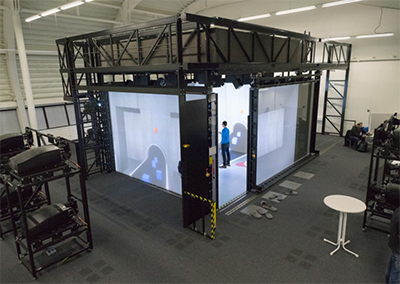Virtual Humans as Co-Workers: A Novel Methodology to Study Peer Effects

We introduce a novel methodology to study peer effects. Using virtual reality technology, we create a naturalistic work setting in an immersive virtual environment where we embed a computer-generated virtual human as the co-worker of a human subject, both performing a sorting task at a conveyor belt. In our setup, subjects observe the virtual peer, while the virtual human is not observing them. In two treatments, human subjects observe either a low productive or a high productive virtual peer. We find that human subjects rate their presence feeling of \being there" in the immersive virtual environment as natural. Subjects also recognize that virtual peers in our two treatments showed different productivities. We do not find a general treatment effect on productivity. However, we find that competitive subjects display higher performance when they are in the presence of a highly productive peer - compared to when they observe a low productive peer. We use tracking data to learn about the subjects' body movements. Analyzing hand and head data, we show that competitive subjects are more careful in the sorting task than non-competitive subjects. We also discuss some methodological issues related to virtual reality experiments.
@article{gurerk2018,
title={{Virtual Humans as Co-Workers: A Novel Methodology to Study Peer Effects}},
author={G{\"u}rerk, Ozg{\"u}r and B{\"o}nsch, Andrea and Kittsteiner, Thomas and Staffeldt, Andreas},
year={2018},
journal = {{Journal of Behavioral and Experimental Economics}},
issn = {2214-8043},
doi = {https://doi.org/10.1016/j.socec.2018.11.003},
url = {http://www.sciencedirect.com/science/article/pii/S221480431830140X}
}

